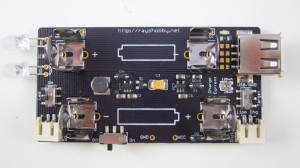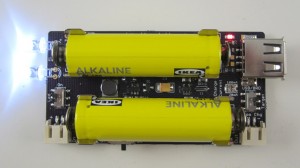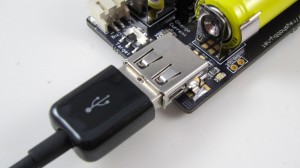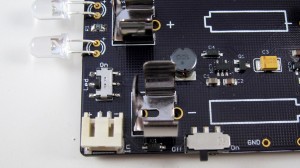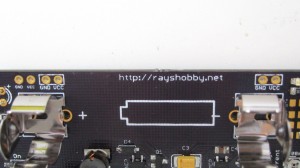Yup, I opened my mail box and found the lovely purple envelope from OSHPark. What’s in it?
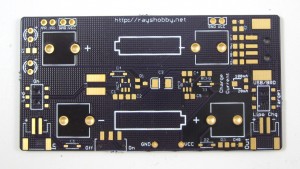

Ah ha, it’s the new AASaver 2.0 prototype PCB. I can’t help getting my hands on it, so I quickly assembled two. Here is what the assembled board looks like (without and with AA batteries):
AASaver 2.0 is sort of a ‘mega’ version of AASaver 1.0: like 1.0, it takes two AA batteries and serves dual functions as both an LED flashlight and breadboard power supply. But it can do much more. First of all, I’ve added a LiPo charger circuitry so that you can use two AA batteries to charge an external LiPo battery:
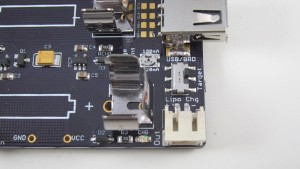
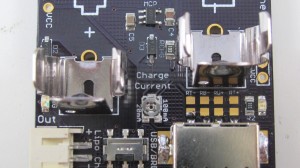
I’ve also added an SMT potentiometer (trimmer) to adjust the charge current (see the picture on the right above), anywhere from 20mA to 100mA. This is not a random addition — there is a good reason to have this feature, which you shall see in a minute.
Another BIG addition is the functionality to charge USB devices like cell phones. Yup, you heard it right: there is a built-in type A USB receptacle that allows you to plug in a USB charging cable to add juice to your phone, MP3 player etc.
So this is similar to Adafruit’s MintyBoost, except that there is a catch: on MintyBoost, you use a pair of fresh battery to charge the phone, but with AASaver the whole point is to harvest the remaining energy in used or old batteries. How does this affect anything? Well, used batteries typically cannot supply a high amount of current, so you can’t use them directly to charge the phone — it simply won’t provide enough current to charge. The trick is to dump the energy slowly into a LiPo battery, then charge the phone through the LiPo battery later! Essentially the LiPo battery serves as a ‘water bucket’, which accumulates charges slowly (like water drops), so that even used AA batteries can charge it; once the ‘water bucket’ has accumulated enough charges, it can dump the ‘water’ at much faster rate. This is the same idea as how solar chargers work: solar cells are too weak to charge phones directly, but you can build up the charges by leveraging a battery. Now you see why there is a built-in LiPo charger!
The picture below shows where the LiPo battery should be plugged in when you want to use it to charge USB devices. In sum, if you have a fresh pair of AA batteries, you can charge USB devices directly; otherwise you first charge the LiPo battery with a controllable charging current (20mA recommended), then use the LiPo to charge USB devices. The circuit of AASaver 2.0 accepts either AA or LiPo as the source of its boost converter, and directs the boosted 5V to either USB port, or LiPo charger, selectable through the ‘Target’ switch at the right-end of the board. On top of these, there is a separate switch for turning on the flashlight LEDs, and there are pin headers spaced appropriately to match a standard breadboard, so you can use it as a battery-based breadboard 5V power supply. As you can see, it has a load of new features to provide better and more flexible ways to save your AA batteries 🙂
